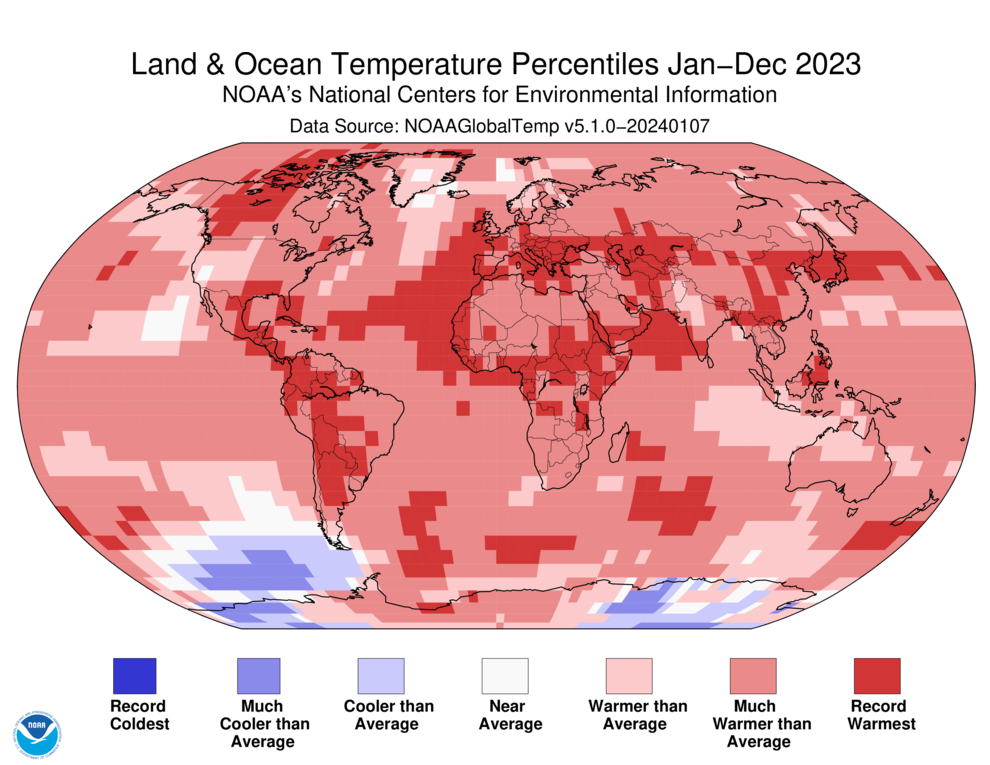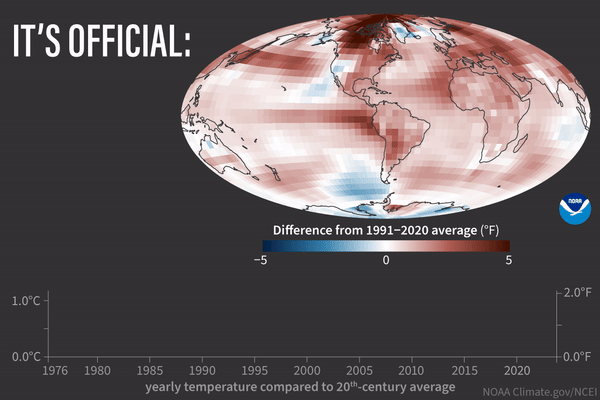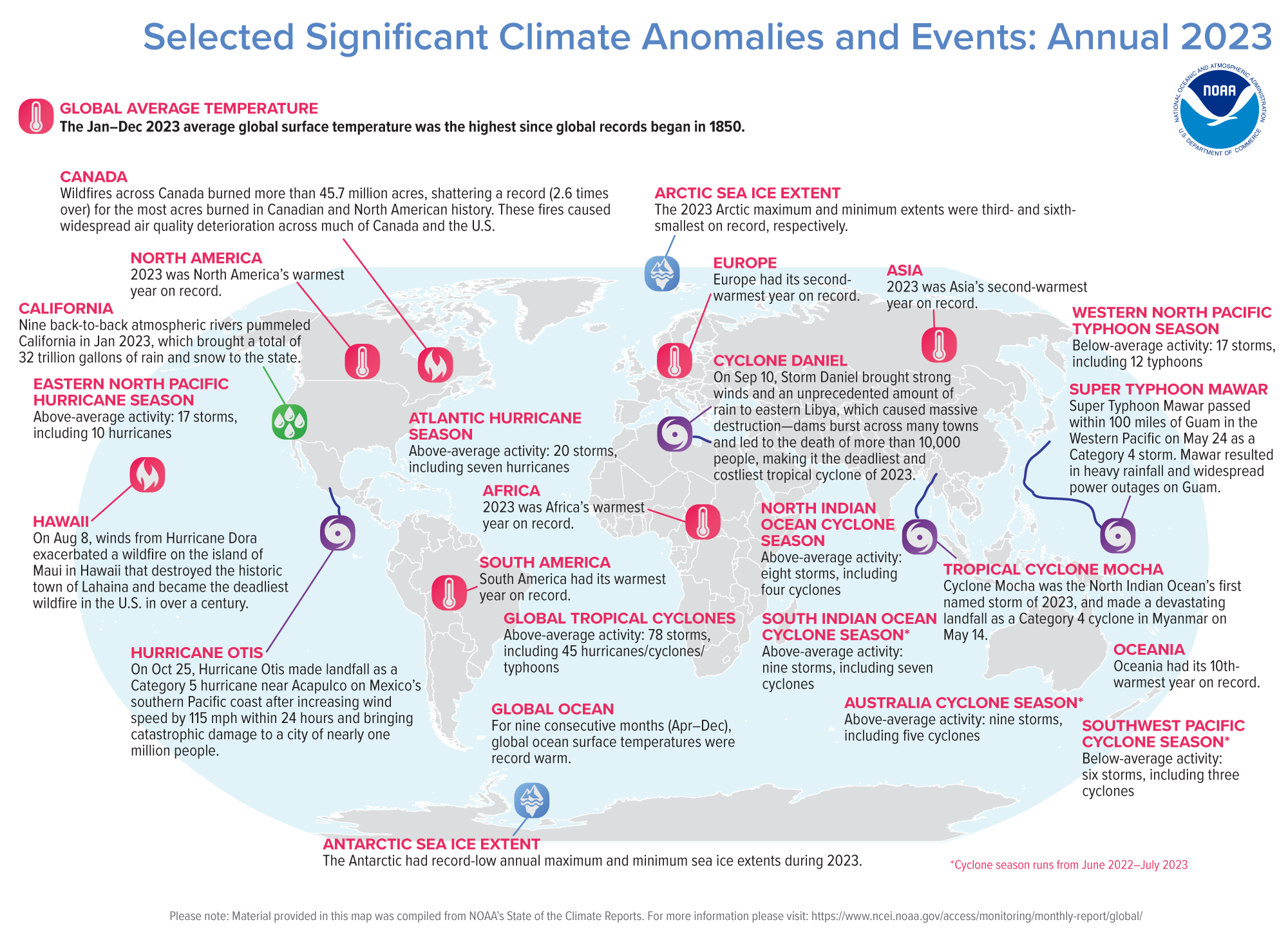Antarctic sea ice coverage hit record low

July 3, 2023: July 3, 2023: An aerial view of low water levels at Woodhead Reservoir in Glossop, England, after the United Kingdom sweltered through its hottest June on record. 2023 was the world’s warmest year on record, beating the next warmest year (2016) by a record-setting margin of 0.27 of a degree F (0.15 of a degree C). (Image credit: Christopher Furlong/Getty Images)
It’s official: 2023 was the planet’s warmest year on record, according to an analysis by scientists from NOAA’s National Centers for Environmental Information (NCEI).
Along with the historic heat, Antarctic sea ice coverage dropped to a record low in 2023.
“After seeing the 2023 climate analysis, I have to pause and say that the findings are astounding,” said NOAA Chief Scientist Dr. Sarah Kapnick. “Not only was 2023 the warmest year in NOAA’s 174-year climate record — it was the warmest by far. A warming planet means we need to be prepared for the impacts of climate change that are happening here and now, like extreme weather events that become both more frequent and severe.
"We will continue to see records broken and extreme events grow until emissions go to zero,” Kapnick said. “Government policy can address both emissions, but also actions to reduce climate impacts by building resilience."
Below are highlights from NOAA’s 2023 annual global climate report:

Climate by the numbers
Earth’s average land and ocean surface temperature in 2023 was 2.12 degrees F (1.18 degrees C) above the 20th century — the highest global temperature among all years in NOAA’s 1850-2023 climate record. It also beats the next warmest year, 2016, by a record-setting margin of 0.27 of a degree F (0.15 of a degree C).
The 10 warmest years since 1850 have all occurred in the past decade. In fact, the average global temperature for 2023 exceeded the pre-industrial (1850–1900) average by 2.43 degrees F (1.35 degrees C).
Looking ahead, there is a one-in-three chance that 2024 will be warmer than 2023, and a 99% chance that 2024 will rank among the top five warmest years.

2023 as ranked by other scientific organizations
Other scientific organizations, including NASA, the Copernicus Climate Change Service offsite link and the UK Met Office have conducted separate but similar analyses that also rank 2023 as the warmest year on record.

Other notable climate findings and events
- Global ocean heat content set a new record high: The 2023 upper ocean heat content, which addresses the amount of heat stored in the upper 2,000 meters of the ocean, was the highest on record. Ocean heat content is a key climate indicator because the ocean stores 90% of the excess heat in the Earth system. The indicator has been tracked globally since 1958, and there has been a steady upward trend since approximately 1970. The five highest values have all occurred in the last five years.
- Polar sea ice was scant: The 2023 annual Antarctic sea ice extent (coverage) averaged 3.79 million square miles in 2023, the lowest on record. The maximum extent in September was 6.55 million square miles, which was the lowest by a record margin. The minimum extent in February was 690,000 square miles, which set a record low for the second consecutive year. Arctic sea ice coverage averaged 4.05 million square miles in 2023, ranking among the 10 lowest years on record. The maximum extent in March was 5.64 million square miles, which ranked fifth lowest, while the minimum extent in September was 1.63 million square miles, which ranked sixth lowest.
- December 2023 set records: Global surface temperature in December 2023 was 2.57 degrees F (1.43 degrees C) above the 20th-century average — the warmest December on record. For the ninth consecutive month, the global ocean surface temperature was also record warm. Looking regionally, North America and South America both had their warmest December on record.
More: Access NOAA NCEI’s year-end 2023 global climate report and images.



